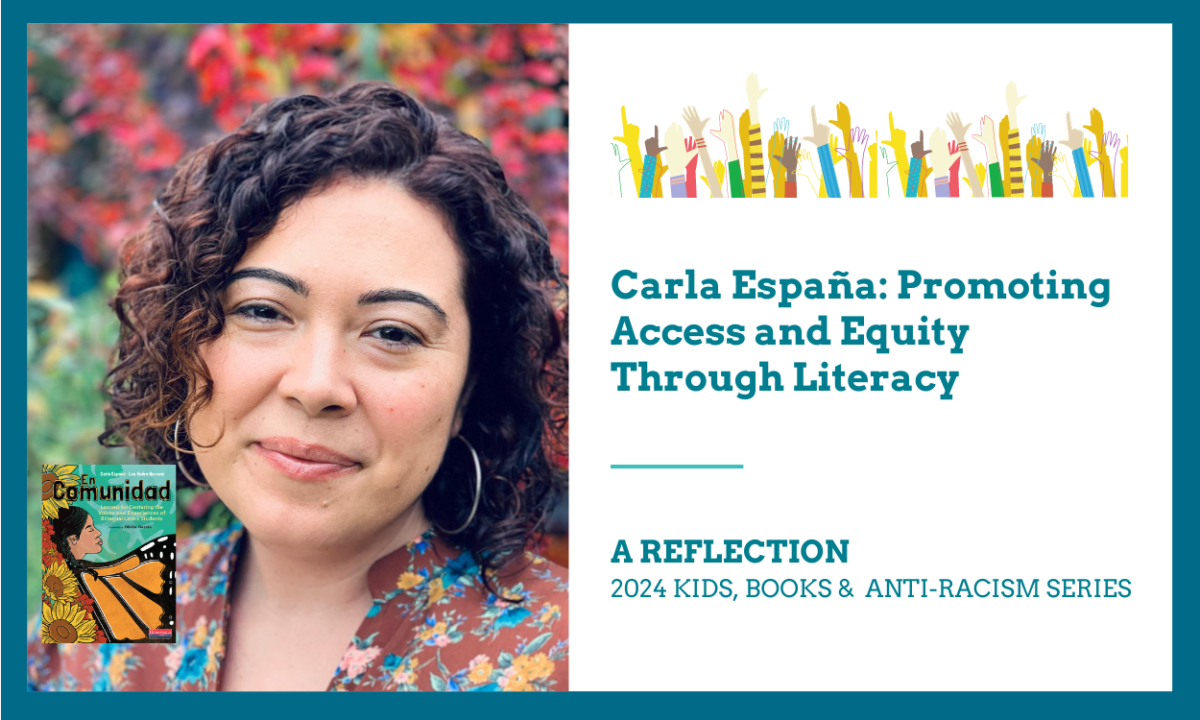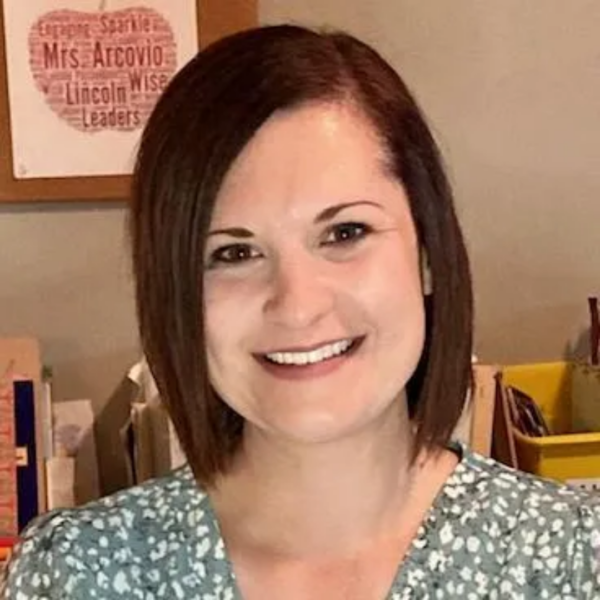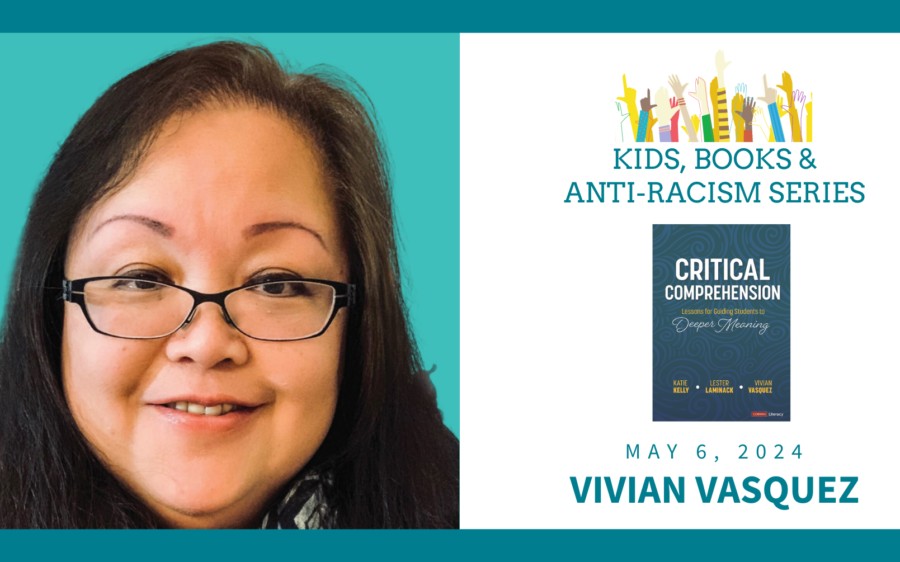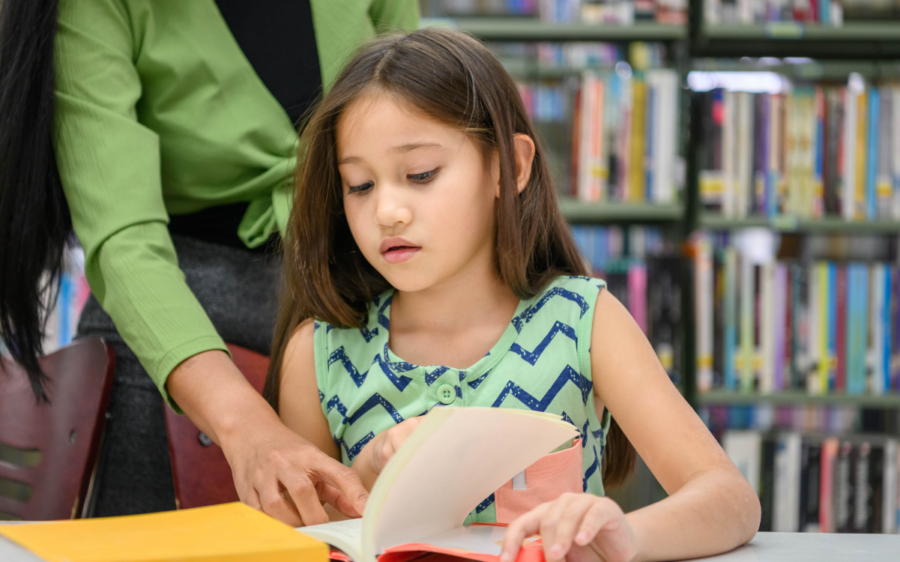Dr. Carla España, bilingual educator, researcher, writer, and speaker, kicked off the 2024 Kids, Books, and Anti-Racism Series at Lesley University. España helped participants think about how to provide children with education that recognizes and celebrates the rich language backgrounds of bilingual and multilingual learners.
I took away several important ideas from the day: be curious about your background with languages as well as the backgrounds of your students; use the power of rich and diverse children’s literature to reflect the students in your class; show that all language is important: and use translanguaging to disrupt the idea that any one language is more important than another. As you read on, I hope you find these ideas helpful in your practice.
Be Curious
España emphasized the importance of beginning this type of work by examining our own language ideologies, our understandings, and journeys with language. How do we view languages and how they are used? Do we value one language over another? Have our views of language changed over the years? What texts are we engaging with that inform our approaches to teaching? How have your thoughts of language changed over time? This inward curiosity helps educators to find possible biases, reflect on their own experiences over time with language, and consider how those experiences show up in their teaching practices.
Another important next step is to be curious about your students so that you can, as España expressed, acknowledge the “fullness of [their] multilingual lives.” Teachers may find it helpful to think about:
Who are my students?
What are their language histories?
What do they know about storytelling from their families and experiences?
Use the Power of Children’s Literature
Children’s literature is a rich source for teaching and building understanding. España encourages us to “be the teachers who give children recognition and celebration of who they are through the power and (correct) use of children’s literature.”
España recommends starting by assessing your classroom library to ensure that it contains plenty of books that will provide the representation of the students in your class. España reminds educators that books provide space for identity formation, community response to injustice, and representation; so finding missing representation is an essential next step. A varied collection of books is equally important for classrooms with little or no diversity, as texts can help children learn about people outside of their own communities.
Remember that picture books are for all ages- including teachers! In her research, España found that picture books used during professional development helped teachers understand more about other cultures. So, keep this in mind if you are someone who designs or facilitates professional learning.
Use Translanguaging to Inform and Disrupt
We can use texts to help children navigate the world by showing them stories and texts that represent their experiences and expose them to the lived experiences of others. Translanguaging is when a multilingual person’s full linguistic repertoire is used and honored, instead of trying to keep narrowly focused on a single language (Heinemann, 2020). España shared many titles of children’s literature for all grades and ages that demonstrate translanguaging. You can learn more about the translanguaging text sets that Espana and Herrera have helped to put together at penguinrandomhouseeducation.com.
Espana encourages educators to carefully examine the books they will use for the following:
- Passages for teacher observations;
- Passages for student observations;
- Passages to read together; and
- What conversations might you have about those observations?
If you would like to know more about how to bring bilingual and multilingual students’ perspectives to the center of your classroom, please visit www.carlaespana.com and www.encomunidadcollective.com.
Reference:
Heinemann Blog (2020) What is translanguaging? Retrieved from: https://blog.heinemann.com/what-is-translanguaging

Did you miss Carla’s session?
Join us on March 8 for more of the Kids, Books, and Antiracism Series when Jennifer Orr will speak on How To Engage Your Students in Meaningful Race Conversations.






